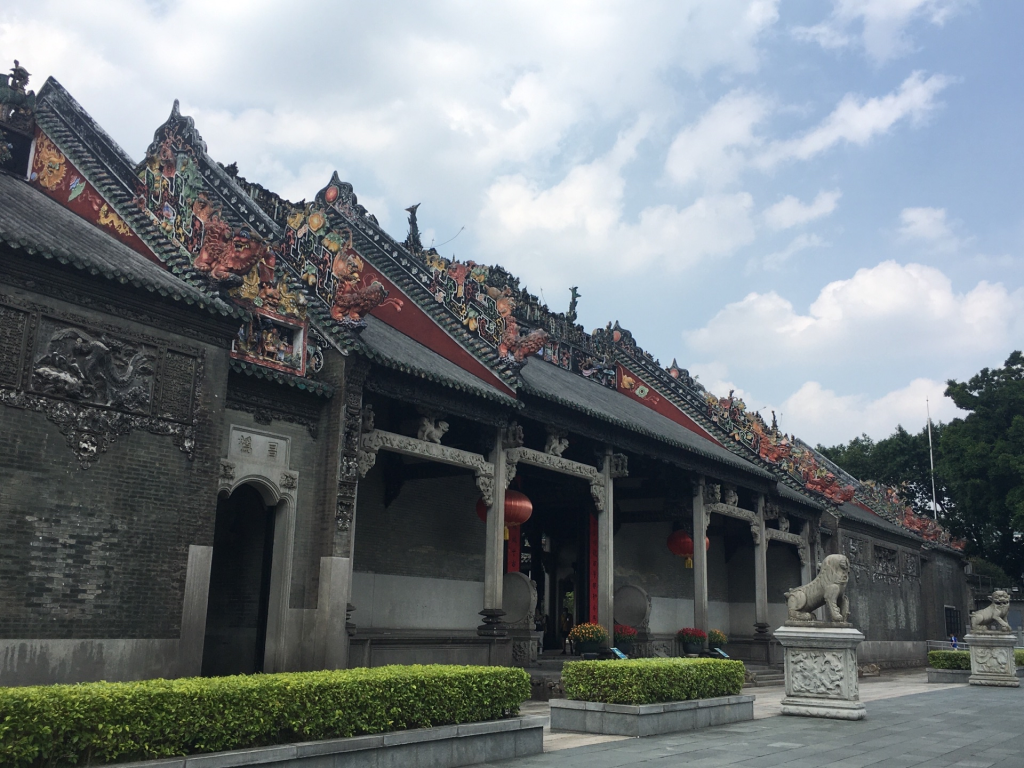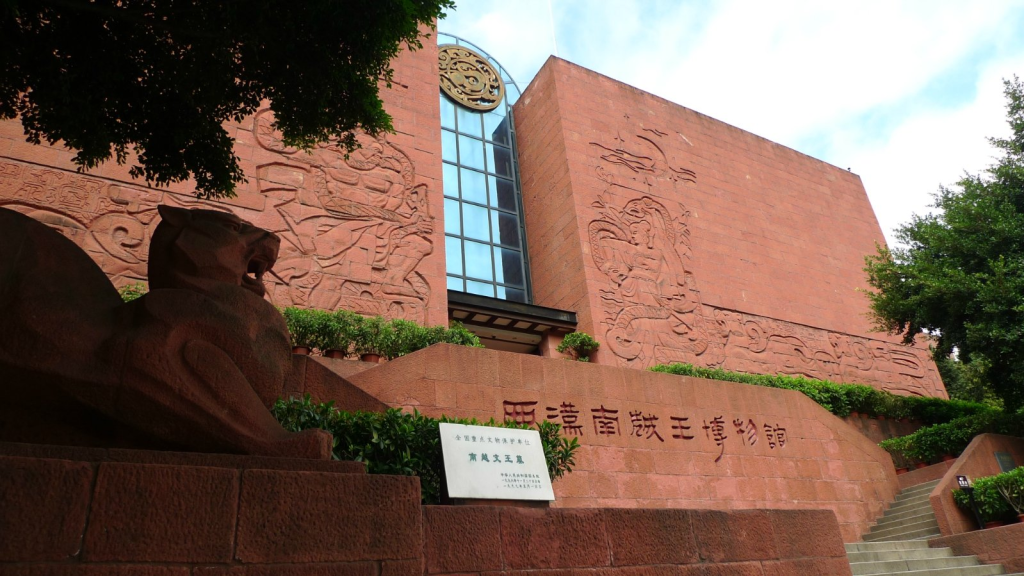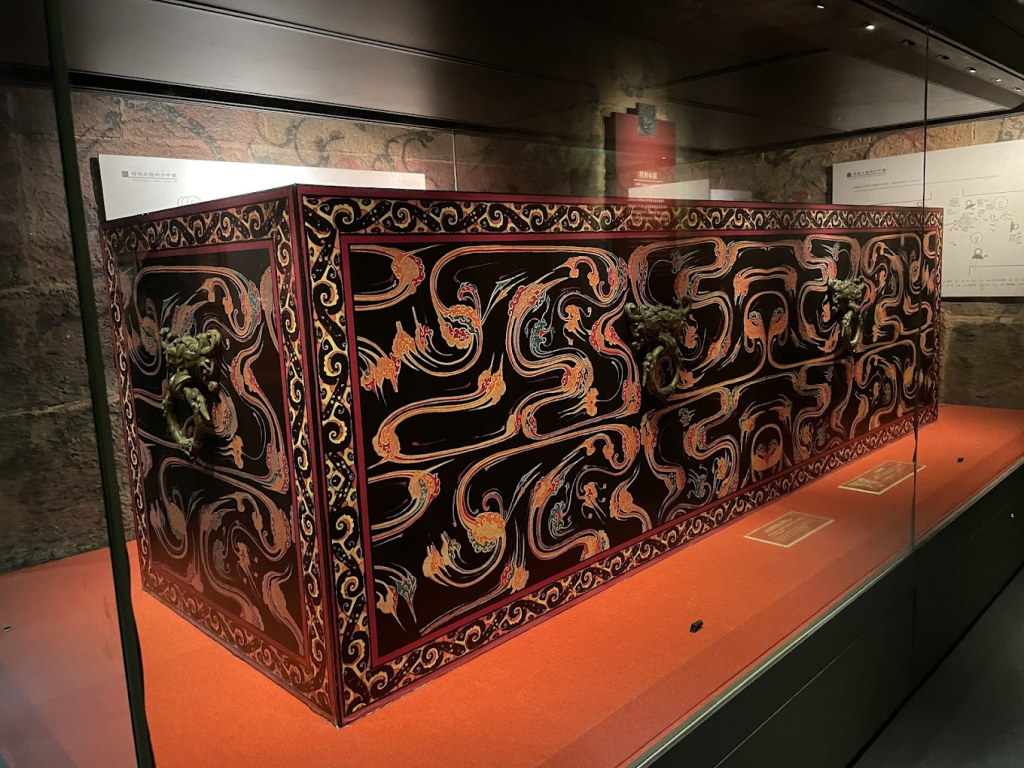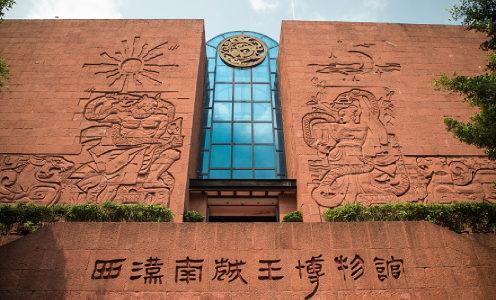Are there any UNESCO World Heritage Sites in Guangzhou?
Guangzhou is a city that is rich in heritage and holds significant cultural significance. 🏛️
The city of Guangzhou, which serves as the flourishing capital of Guangdong Province in southern China, is a city that is steeped in history and holds significant cultural significance. Over the course of more than two thousand two hundred years, Guangzhou has been an important port along the ancient Maritime Silk Road 🚢, which has played a significant role in facilitating trade between China and the rest of the world. The city continues to be a bustling hub of modern development, culture, and business even in the present day. It is important to note that Guangzhou does not currently have any UNESCO World Heritage Sites, despite the fact that it has a significant historical and cultural heritage. The purpose of this article is to investigate the cultural heritage of the city, investigate the reasons why it has not been inscribed as a UNESCO World Heritage Site, and investigate the potential future of the city in relation to the recognition of its heritage abroad.
An Explanation of UNESCO World Heritage Organization Sites
It is essential to have a fundamental understanding of the concept of a UNESCO World Heritage Site before undertaking an exploration of the cultural landscape of Guangzhou. Established in 1972, the United Nations Educational, Scientific and Cultural Organization (UNESCO) developed the World Heritage Convention to identify, protect, and preserve cultural and natural heritage sites of “outstanding universal value.” These sites are considered irreplaceable treasures, not only of their respective countries but of humanity as a whole. 🌍
The following are the three categories that UNESCO uses to classify World Heritage Sites:
- Monuments, collections of buildings, or locations that are significant from a historical, artistic, archaeological, or anthropological perspective are examples of what are referred to as “cultural heritage sites.” 🖼️
- These natural areas, which may include geological formations and ecosystems, are referred to as “Natural Heritage Sites.” These sites are distinguished by their exceptional beauty or outstanding scientific significance. 🏞️
- The term “Mixed Sites” refers to locations that serve as a balanced representation of the interaction between humans and the environment. These locations are significant for both their cultural and natural aspects. 🧑🌾
China has a total of 56 UNESCO World Heritage Sites as of the year 2023, making it one of the countries with the highest number of properties that have been registered. These include the Great Wall 🧱, the Terracotta Army 🗿, and the Forbidden City 🏯, which are all monumental landmarks, as well as the Jiuzhaigou Valley, which is a natural wonder that is absolutely breathtaking. Even though the country covers a large territory, there are still some regions that are not recognized by UNESCO. One of these regions is Guangzhou.
Guangzhou’s Current Position in the UNESCO Organization
Even though Guangzhou is undeniably significant in terms of both its historical and cultural contexts, the city does not yet have a UNESCO World Heritage Site within its boundaries. Given the city’s long and illustrious history, which dates back to the Qin Dynasty (221–206 BCE) and its function as a significant trading hub along the Maritime Silk Road, this absence may appear to be surprising. Obtaining UNESCO status, on the other hand, is a difficult and time-consuming process that requires extensive documentation, preservation efforts, and years of evaluation. This process is not only time-consuming but also extremely competitive, as numerous cities are competing for a limited number of spots among the available spots. 😥
The city of Guangzhou itself has not been acknowledged by UNESCO; however, other regions within Guangdong Province have been recognized. In 2007, the Kaiping Diaolou and Villages, which are situated approximately 140 kilometers to the southwest of Guangzhou, were on the list of protected areas. The cultural exchange that took place during the great migration of Guangdong’s people in the early 20th century is reflected in these one-of-a-kind, multi-story, defensive village dwellings. These dwellings combine Chinese and Western architectural styles.
There is a significant cultural and historical significance to Guangzhou. 💯
In spite of the fact that Guangzhou is not recognized by UNESCO, it is home to a great number of sites that are of significant historical and cultural significance and contribute to China’s extensive archaeological heritage. A distinctive cultural fusion has emerged as a result of the city’s role as a major trading port over the course of several centuries. This fusion is characterized by the combination of traditional Chinese customs and influences from other countries.
The Maritime Silk Road and the Archaeological Background of the Middle East
It is possible to trace Guangzhou’s roots all the way back to the Qin Dynasty under the name Panyu, which was the first city in the region. The city of Guangzhou, which served as an important stop along the Maritime Silk Road, played a significant role in facilitating trade between China and countries located in Southeast Asia, the Indian subcontinent, the Middle East, and even East Africa. The city had become known as the “Southern Gate of China” by the time of the Tang Dynasty (618–907 CE) due to its significance in both the international trade and cultural exchange that took place during that time period. 🚪
It is impossible to erase the indelible mark that Guangzhou’s status as a port city has left on its culture. Its streets and buildings continue to reflect the mix of local and foreign influences, which results in a dynamic atmosphere that encourages openness, flexibility, and the exchange of cultural ideas.
Guangzhou is home to a number of significant historical sites.
The city of Guangzhou is home to a wide variety of historical and architectural treasures, despite the fact that it has not yet been inscribed as a UNESCO World Heritage Site. The city has been a vital hub for commerce, culture, and international exchange for millennia, and these landmarks are a powerful representation of the city’s rich cultural and historical legacy. The following locations are some of the most significant places in Guangzhou’s diverse heritage. They range from ancient temples to buildings that date back to the colonial era.
The Ancestral Hall of the Chen Clan 🏛️

During the Qing Dynasty, the Chen Clan Ancestral Hall was built in 1894. It is considered to be one of the finest examples of Lingnan architecture, which is a style of architecture that is unique to southern China and combines traditional Chinese design with local innovations in order to accommodate the subtropical climate of the region. In the beginning, the Chen family intended for the hall to serve as both a temple and an academy. However, throughout its history, the hall has served a dual purpose, serving as a center for both family worship and scholarship. In the culture of southern China, particularly among the wealthy merchant families of Guangdong, the establishment of this institution reflects the significance of education and the veneration of ancestors. 🙏
An expansive complex that is comprised of nineteen buildings, nine halls, and six courtyards, all of which are meticulously arranged symmetrically along a central axis, this architectural masterpiece is a masterpiece in its own right. The arrangement is designed in accordance with the principles of traditional feng shui, which guarantees that the hall will be in harmony with its natural surroundings. It is clear that the Chen Clan Ancestral Hall is significant from an aesthetic standpoint due to the intricate decoration and fine craftsmanship exhibited within it. The structure is adorned with stone sculptures, detailed wood carvings, and vivid porcelain figures that depict scenes from Chinese mythology. These figures depict aspects of Chinese mythology, including well-known stories such as those of the Monkey King and the Eight Immortals. 🐒 Not only are these decorations artistic, but they also carry profound symbolic meanings that are associated with prosperity, protection, and good fortune. 🍀
The hall is not only a magnificent example of architecture, but it also serves as the location of the Guangdong Folk Art Museum, which is dedicated to preserving the region’s extensive cultural heritage. Traditional arts such as wood carving, brass casting, embroidery, and pottery are among the many objects that are displayed in the museum’s extensive collection of traditional arts. It is an important institution for the preservation of Lingnan craftsmanship, and it provides visitors with the opportunity to investigate the artistic traditions that have contributed to the formation of this culturally vibrant region. Because of its combination of artistic brilliance and historical significance, the hall is considered to be one of the most significant cultural landmarks in Guangzhou. It is a symbol of the intricate craftsmanship and deeply ingrained values that were prevalent during that era.
Shamian Island 🏘️
Shamian Island, which is situated in the middle of Guangzhou and is situated along the Pearl River, is a one-of-a-kind historical site that serves as a testament to the colonial past of the city. The Second Opium War, which took place between 1856 and 1860, resulted in the division of Shamian Island into concessions belonging to the British and the French, thereby transforming it into a foreign enclave. Western powers established their presence on the island, which allowed them to exert influence over China’s commercial and diplomatic relations. As a result, the island became a hub for international trade and diplomacy. Currently, Shamian Island is one of the most well-preserved neighborhoods in China that dates back to the colonial era. It also functions as a living museum that displays colonial architecture from the 19th century. 🕰️
The island is home to more than 150 historical buildings, each of which is characterized by a unique combination of Gothic, Baroque, and Neoclassical architectural traditions. The incorporation of these Western influences into the traditional urban landscape of China results in the formation of a cultural fusion that is one of a kind. The buildings are distinguished by their sophisticated exteriors, balconies made of wrought iron, and the meticulous craftsmanship that was prevalent during that time period. Notable buildings include the Christ Church, which is an example of Gothic revival architecture, and the former British Consulate, which is now a museum that provides insights into the colonial history of Guangzhou. Both of these buildings are located in Guangzhou. ⛪
On Shamian Island, the streets are lined with tree-canopied paths 🌳, which creates an atmosphere that is calm and peaceful. This is in stark contrast to the bustling urban environment of Guangzhou. The historical allure of the island, in conjunction with its abundant cultural heritage, makes it a well-liked destination for both the locals and the tourists. Visitors have the opportunity to take leisurely strolls, investigate the colonial architecture, and visit the small cafes and boutiques that have become a part of the island’s contemporary allure. Shamian Island is a vibrant symbol of Guangzhou’s role as a major trade hub during the 19th century. It demonstrates the city’s deep historical ties to the international community.
Temple of the Six Banyan Trees, also known as the Liurong Temple.
The Temple of the Six Banyan Trees, also known as the Liurong Temple, is a significant landmark of Guangzhou’s spiritual heritage and is considered to be one of the most revered Buddhist temples throughout the city. In spite of the fact that it has been reconstructed on multiple occasions since its inception in 1097, during the Song Dynasty, the temple continues to serve as a representation of the city’s profound Buddhist roots and the religious significance it holds. Although only a few of the original banyan trees are still standing today, the name of this place comes from the six banyan trees that once surrounded the grounds of the temple compound. 🌳🌳🌳🌳🌳🌳
The Flower Pagoda 🌸, which is an octagonal structure that stands at a height of 57 meters, is one of the most notable features of the temple. During the Song Dynasty, this pagoda was constructed, and it is a marvel of architecture that serves as a visual focal point for the entire temple complex. The multi-tiered design, intricate carvings, and vibrant colors of this structure make it one of the most distinguishing features of Guangzhou’s skyline. Not only is the pagoda a spiritual monument, but it is also a physical manifestation of the artistic and architectural prowess that the city possessed during the Song period.
There are a number of significant Buddhist relics that can be found within the temple. Among these are three copper statues of the Buddha that were cast during the Song Dynasty. In addition to being revered by Buddhist practitioners, these statues are a popular destination for tourists from all over the world who come to pay their respects and gain knowledge about the spiritual history of the area. Amidst the commotion and activity of Guangzhou’s contemporary life, the Liurong Temple continues to serve as a place of religious practice, providing a serene and contemplative atmosphere for those who wish to engage in religious activities. 🧘
In addition to being a place of worship, the Liurong Temple is also a location where archaeological and cultural discoveries can be made. Visitors have the opportunity to immerse themselves in the temple’s illustrious history, admire the architectural beauty of the structure, and contemplate the significance of the temple within the larger context of Chinese Buddhism.

Nanyue King Wen’s Mausoleum 🏺⚱️
One of the most remarkable archaeological discoveries in southern China is the Nanyue King’s Tomb, which was discovered back in the year 2000. The tomb, which can be found in Guangzhou, was once owned by the second king of the Nanyue Kingdom, which was a powerful state that once ruled the region of southern China. The kingdom existed from 203 BCE to 111 BCE. The tomb was found in 1983 and is regarded as one of the most well-preserved royal tombs from ancient China. It offers a wealth of information regarding the history and culture of the region during that time period.
The remarkable preservation of this tomb, in particular the jade burial suit that was discovered inside, is what sets it apart from other tombs. This intricate suit, which was constructed out of more than two thousand pieces of jade, was given the purpose of safeguarding the king’s body in the afterlife. The use of jade, a precious material that is associated with immortality, is evidence of the Nanyue Kingdom’s high level of craftsmanship as well as their belief in the spiritual significance of the material world. In addition to the jade burial suit, the tomb is filled with a plethora of gold and silver utensils, bronze seals, and pottery, all of which offer a glimpse into the social and cultural practices that were prevalent during that period of time. 💎
The Nanyue King’s Tomb Museum provides visitors with an in-depth look at the Nanyue Kingdom and its participation in the early development of southern China. The museum highlights the discovery of the tomb as well as the treasures that were found within it. In order to establish a harmonious connection between the past and the present, the architectural design of the museum allows for the incorporation of contemporary elements into the ancient burial site. With sleek, contemporary lines that complement the historical significance of the tomb, the building itself is a reflection of the cultural history of the region.
The Nanyue King’s Tomb Museum, which is considered to be one of the most significant archaeological sites in Guangzhou, not only provides visitors with an enthralling look into the world of the ancients, but it also emphasizes the ongoing significance of preserving the cultural and historical heritage of the city. The treasures that were found inside the tomb are evidence that Guangzhou had been a center of culture, power, and trade in ancient China for a very long time.
A Look at the Obstacles and Opportunities Along the Way to UNESCO Recognition
The fact that none of Guangzhou’s sites have been designated as UNESCO World Heritage sites is something that one might wonder about given the city’s abundance of historical landmarks. This circumstance is caused by a number of factors, including:
In Guangzhou, the rapid urbanization that has occurred has resulted in the destruction of some historic neighborhoods and buildings. This presents a challenge for preservation efforts. It is difficult to preserve the city’s historical fabric in the midst of modern growth due to the intense development that is taking place in the city. 🏗️
Competition for Recognition: Due to China’s extensive cultural and natural heritage, the competition for UNESCO designations is extremely fierce. Despite the fact that Guangzhou’s legacy is significant, it frequently competes with other well-documented and globally significant sites that already dominate the narrative of Chinese history. 🏆
The UNESCO World Heritage designation process is extremely demanding, and the selection process for UNESCO World Heritage sites is extremely rigorous. Not only must websites exhibit exceptional universal value, but they must also fulfill stringent criteria for authenticity and integrity. In order to differentiate themselves from other cultural landmarks that already meet these criteria, the sites in Guangzhou face a number of challenges.
Guangzhou has the potential to achieve recognition in the future through a number of different avenues, despite the difficulties that it is currently facing.

The Possibilities of Obtaining UNESCO Recognition in the Future
“Serial Nomination for the Maritime Silk Road”: Guangzhou’s role in the Maritime Silk Road could be highlighted through a serial nomination that links several historical sites along this ancient trade route. This would be a means of highlighting Guangzhou’s significance in the Silk Road. 🗺️
Cultural Landscape Approach: Guangzhou could pursue recognition as a cultural landscape that places an emphasis on the city’s historical interaction with the environment. This interaction includes the city’s location along the Pearl River and its distinctive adaptation to a subtropical climate. 🏞️
Lingnan Cultural Legacy: A submission that highlights Guangzhou as the heart of Lingnan culture—a region that is known for its distinctive architecture, cuisine, arts, and customs—could bring attention to the distinctive contributions that this region has made to Chinese culture. 🍜
The fact that Guangzhou is not registered as a UNESCO World Heritage Site does not lessen the significance of its cultural and historical heritage. The rich heritage of the city, which has been shaped by centuries of cultural exchange and commercial exchange, continues to be an essential component of China’s legacy. The continued efforts that Guangzhou is making to preserve its heritage through adaptive reuse projects, legal protections, and community involvement demonstrate a commitment to protecting its cultural legacy for future generations. This is despite the fact that the process of obtaining UNESCO recognition is difficult and highly competitive. There are numerous opportunities for Guangzhou to eventually earn UNESCO recognition, which would further solidify its place on the global cultural map. Despite the fact that challenges still exist, there are numerous opportunities. ✨


